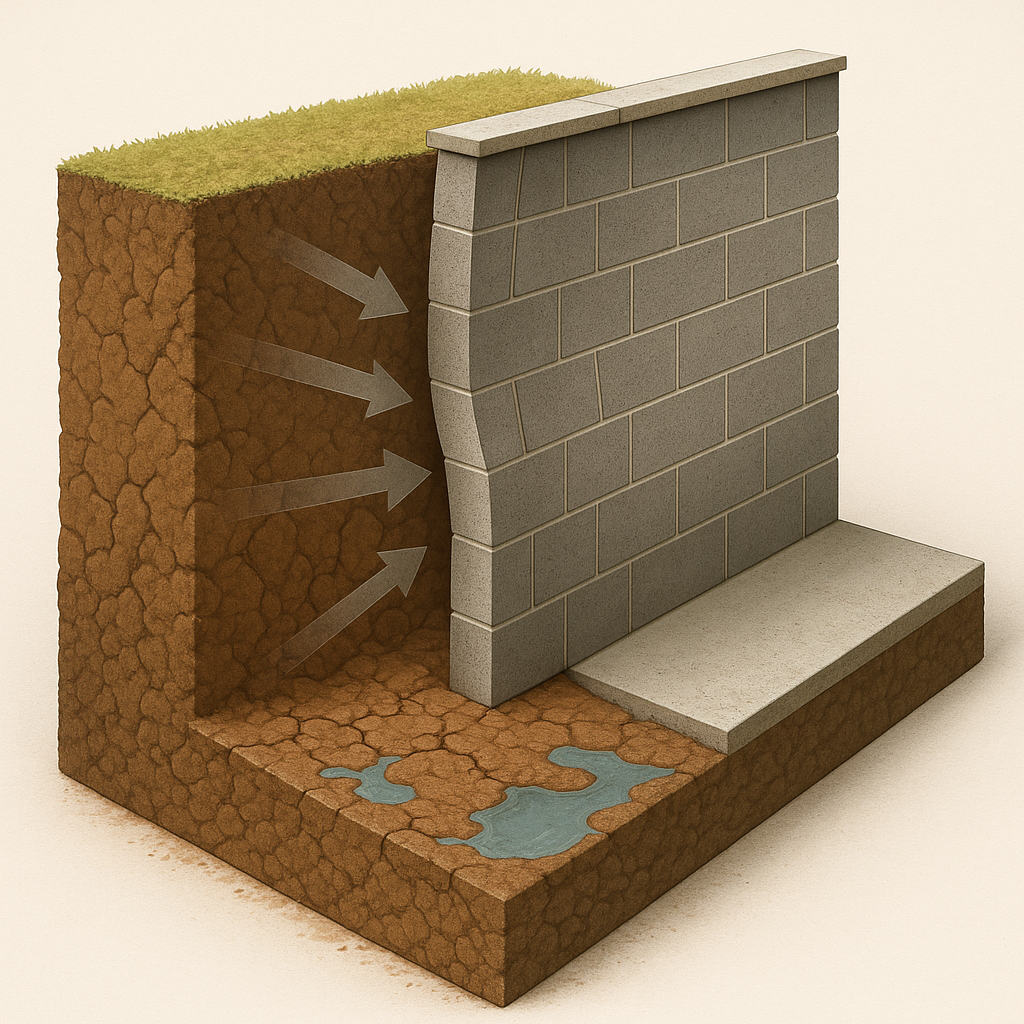Before It’s Too Late: 5 Basement Wall Red Flags You Can’t Ignore
Lately, with the increasingly severe weather patterns we have been experiencing in Central Ohio, basement foundation walls are becoming a greater liability for homeowners in our region. This is coupled with the fact that there are many older homes in Columbus, which were built to outdated design standards.
Many of these walls were built with cement block, concrete masonry units (CMUs), that were installed with rebar on a specific center-to-center spacing. The CMUs are designed for the lateral soil pressures they experience from soil alone, but when you backfill these walls with cohesive soils, these clay-based soils will expand and contract through dry and wet periods.
CMU Retaining Wall
The CMU’s are designed for the lateral soil pressures that they experience from soil alone, but when you backfill these walls with cohesive soils, the soils will expand and contract when they are going through dry and wet periods.
The wet periods will expand the soils and put additional pressure against the walls. This is exacerbated when the soils freeze in the colder months. Here in Ohio, we are in a climate that experiences many freeze-thaw cycles. The more of these cycles that we get in a winter, the more damage is done. When we have wet freeze-thaw conditions, it’s even worse. This adds lateral pressure to the walls, which they are not designed for. We then get more phone calls when homeowners start to realize that something isn’t right.
Another major contributor to this is grading and keeping water away from your foundation. As the soil was backfilled around your foundation walls without compaction, you will get settlement of that soil. This will create a negative grade and allow water to pool around the foundation. Your gutters may also be undersized or full of debris. This will allow water to pour directly against your foundation as water overtops the gutters and flows along your foundation.
What are the signs of a bowing basement wall ?
Many homeowners want to use their basements as another finished space in the house to enjoy. However, when you finish that space with drywall and carpeting, the most visible signs of damage are hidden. Those signs are the following:
-
Horizontal cracking may appear at the mortar joint in the middle of the wall. This is from the wall bowing into your basement. This bowing causes the inside of the wall surface to be a little longer than the back side, so a crack will appear.
-
Diagonal cracking at the corners of the wall is a function of the wall's bowing and moving. The wall is still supported from the outside corner by the abutting wall. This provides a strong area of support at the corner while the wall is deflecting, which will be translated into a diagonal crack as the wall bows inward.
-
Moisture or efflorescence staining of the lime in the cement blocks will appear as a chalky substance at the face of the wall as the water transports it through the face of the block.
-
Mold or mildew conditions on the face of the block wall will appear as the water saturates the block and starts entering the home.
-
Soil staining against the basement block wall may sometimes appear as the saturated soils leach fine particles through the block.
What are some of the things that you can do to help keep this water away from your foundation?
Always monitor the gutters and keep them clean. Gutter helmets or gutter toppers are preferable to keep the debris from entering the gutters.
The grading of the soils around the perimeter of the home should be 1” over 12” (8.33%) until 6’ away, then 1/4” of drop every 12” (2.08%) thereafter. If the grading around the home is less than this, add more clay soils, as clay soils are harder for water to penetrate.
Sump pump and utilities can sometimes break and cause water issues. Check these areas if you notice any wet spots.
























